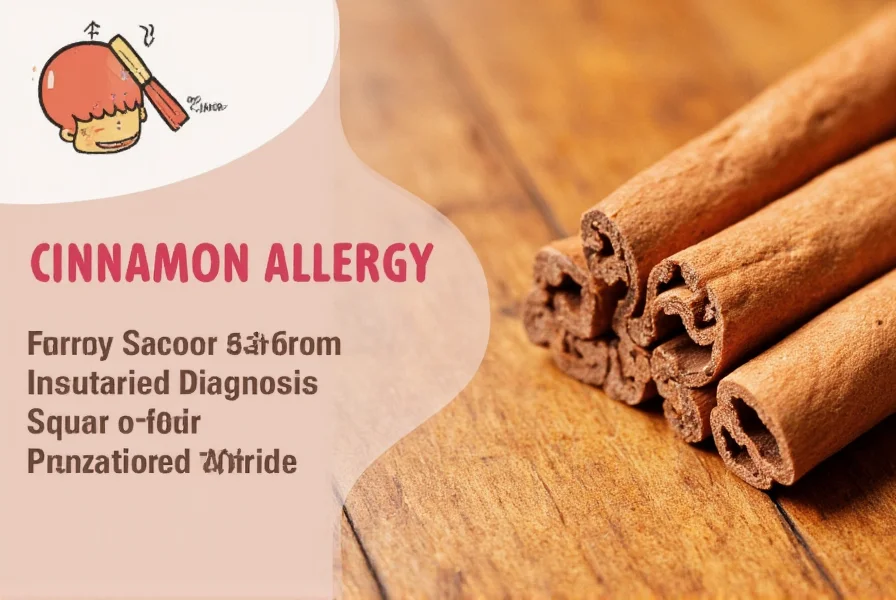While cinnamon is a beloved spice worldwide, some individuals experience adverse reactions that go beyond simple digestive discomfort. Understanding the difference between a true cinnamon allergy and other negative reactions is crucial for proper management and safety.
Understanding Cinnamon Allergy vs. Sensitivity
A true cinnamon allergy symptoms occur when your immune system mistakenly identifies proteins in cinnamon as harmful invaders. This triggers an IgE-mediated response that can affect multiple body systems. In contrast, cinnamon intolerance vs allergy represents a non-immune reaction, typically causing only digestive issues like bloating or stomach pain without involving the immune system.
Cassia cinnamon (the more common variety found in supermarkets) contains higher levels of coumarin, which can cause liver issues in large amounts but doesn't trigger true allergic reactions. Ceylon cinnamon ("true" cinnamon) has lower coumarin levels but can still cause allergic reactions in sensitive individuals.

Symptoms of Cinnamon Allergy
Allergic reactions to cinnamon typically appear within minutes to two hours after exposure. Symptoms vary in severity:
| Reaction Severity | Common Symptoms | Timeframe |
|---|---|---|
| Mild | Itchy mouth, skin redness, hives, mild swelling | Immediate to 30 minutes |
| Moderate | Nasal congestion, wheezing, abdominal pain, vomiting | 15-60 minutes |
| Severe | Difficulty breathing, throat swelling, dizziness, anaphylaxis | Immediate to 20 minutes |
Contact dermatitis from handling cinnamon appears as red, itchy skin at the contact site, usually developing 12-48 hours after exposure. This skin reaction to cinnamon represents a delayed hypersensitivity rather than an immediate IgE-mediated allergy.
Diagnosing Cinnamon Allergy
If you suspect a cinnamon allergy, proper diagnosis requires medical evaluation. Self-diagnosis can lead to unnecessary dietary restrictions or, worse, missing a potentially dangerous condition.
An allergist may use several diagnostic methods:
- Skin prick test - Introducing a small amount of cinnamon extract under the skin to observe reaction
- Specific IgE blood test - Measuring antibodies to cinnamon proteins
- Oral food challenge - Supervised consumption of cinnamon in gradually increasing amounts (only performed in medical settings)
- Elimination diet - Removing cinnamon from diet for 2-4 weeks, then reintroducing under supervision
Accurate diagnosis is essential because how to treat cinnamon allergy differs significantly from managing intolerance. Misdiagnosis could lead to inadequate protection against potentially life-threatening reactions.
Managing Cinnamon Allergy Effectively
Complete avoidance remains the primary strategy for managing true cinnamon allergy. This requires vigilance as cinnamon appears in unexpected products:
- Read all food labels carefully - cinnamon appears in spice blends, baked goods, cereals, and even some meats
- Check cosmetic and dental products - cinnamon flavoring appears in toothpaste, mouthwash, and lip products
- Be cautious with herbal supplements and teas
- Inform restaurant staff about your allergy when dining out
- Carry emergency medication if prescribed by your allergist
For mild reactions, antihistamines may provide relief, but severe reactions require immediate epinephrine administration and emergency medical care. Never attempt to test your tolerance by deliberately consuming cinnamon after diagnosis.

Living Safely with Cinnamon Sensitivity
If you have cinnamon sensitivity rather than a true allergy, management differs significantly. You may tolerate small amounts or certain cinnamon varieties:
- Try Ceylon cinnamon which contains less coumarin
- Reduce portion sizes of cinnamon-containing foods
- Cook with alternative spices like nutmeg or allspice
- Consider digestive enzymes if reactions are primarily gastrointestinal
Unlike true allergies, sensitivity may improve with time or through gut health optimization. However, consult with a healthcare provider before making significant dietary changes, especially if you have other food sensitivities or medical conditions.
When to Seek Medical Attention
Seek immediate medical care if you experience:
- Difficulty breathing or swallowing after cinnamon exposure
- Swelling of the face, lips, or throat
- Dizziness or loss of consciousness
- Rapid heartbeat following cinnamon consumption
For less severe but persistent symptoms, schedule an appointment with an allergist or immunologist. They can determine whether you have a true allergy, sensitivity, or another condition mimicking cinnamon allergy symptoms.











 浙公网安备
33010002000092号
浙公网安备
33010002000092号 浙B2-20120091-4
浙B2-20120091-4